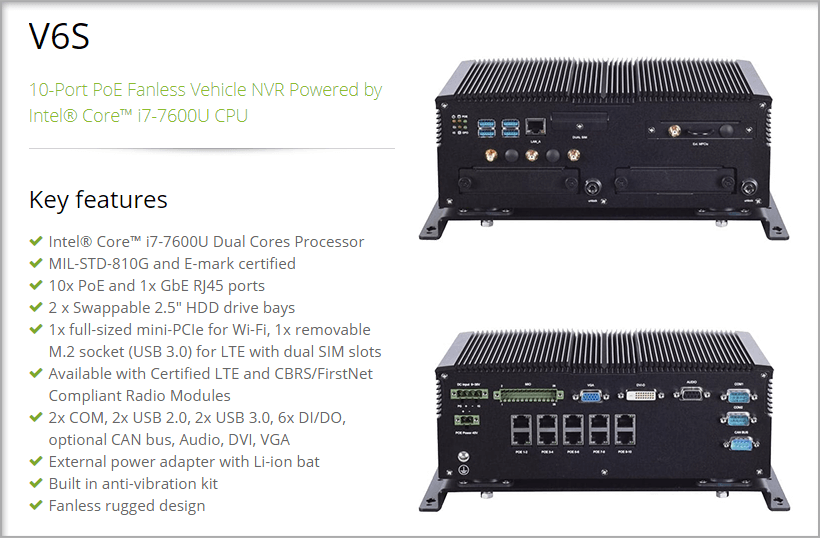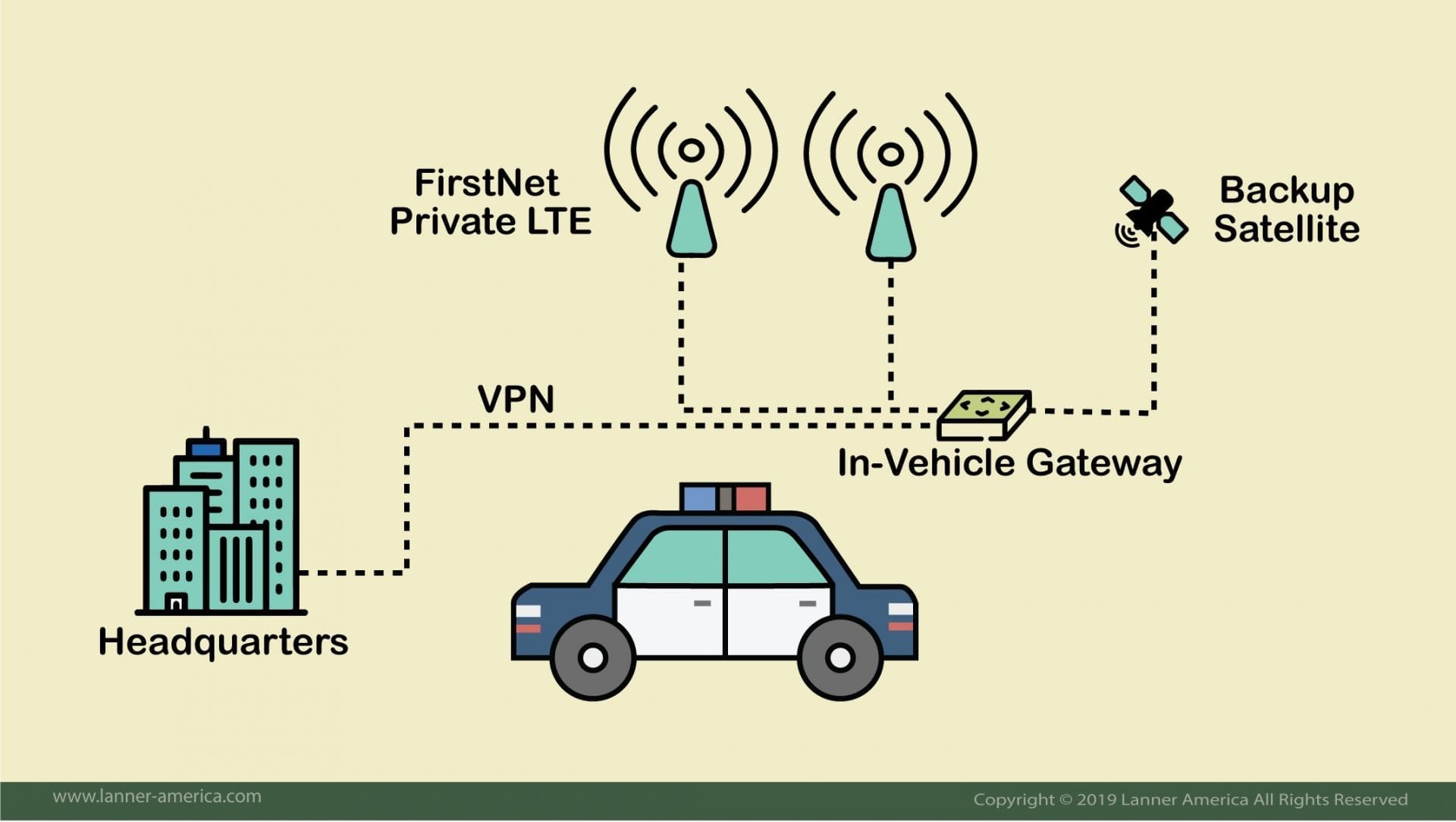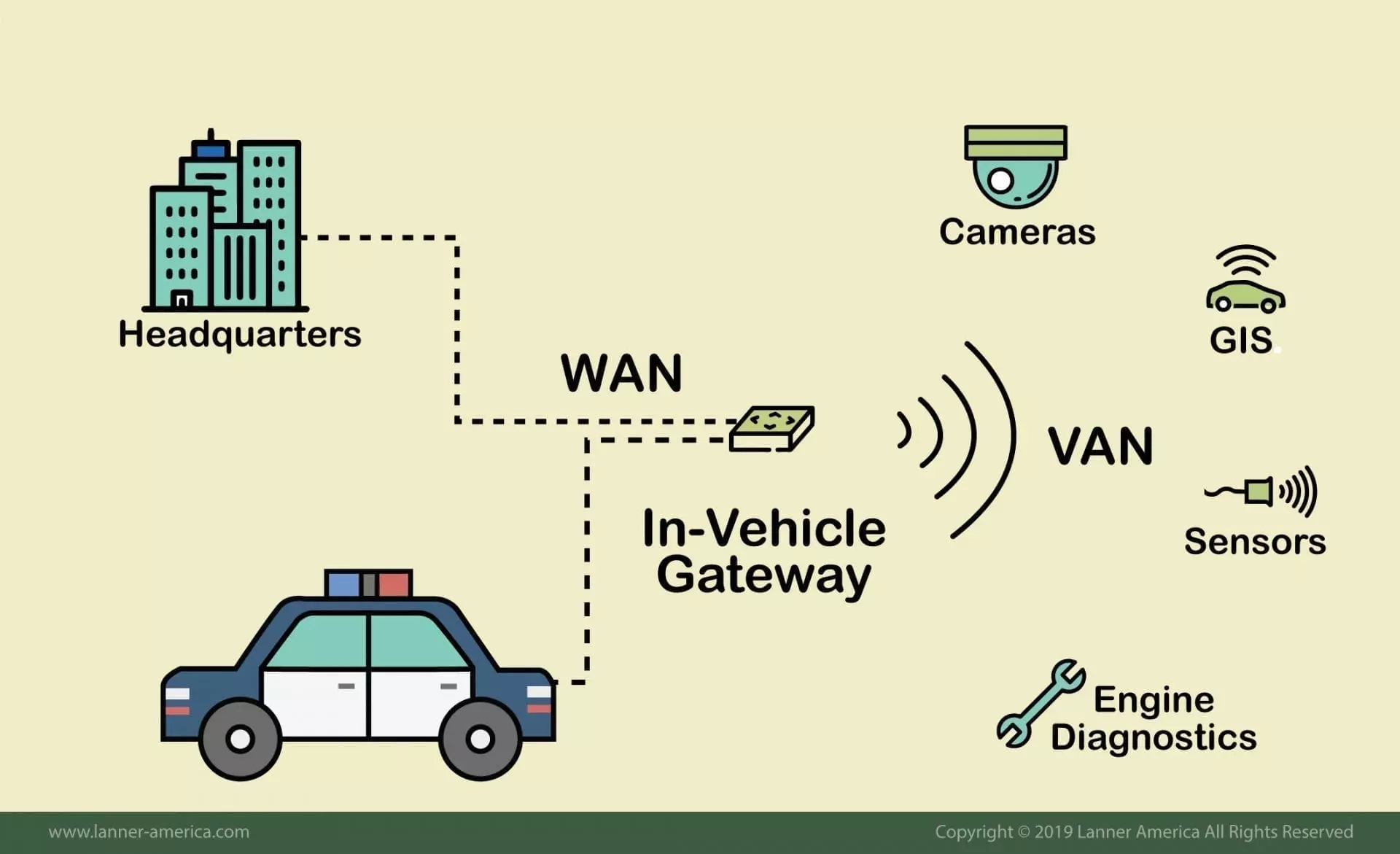Emergency response and public safety service workers, like police, firefighters, or paramedics, have become dependent on their connected devices when carrying out their duties. They are always on the move, so being connected to their base makes their job safer, more efficient, and cost-effective.
But this connection doesn’t happen by itself. An in-vehicle gateway is a rugged and tough hub for all mobile communications. They provide hyper-connectivity to all emergency response IoT devices while on the go.
Traditional Systems vs. The In-Vehicle Gateway
Traditionally, emergency and first response vehicles like police and ambulances connect their devices separately to the same private mobile network. That could be a laptop where a police officer issues tickets connected directly to a mobile antenna through a modem, or a hotspot. In the same case, an ambulance’s tracking system directly connected to the network using a separate modem and a patient’s health report sent via an extra separate modem.
Although uncentralized connected devices minimize single point of failures, their hardware capacities are not built for emergency response purposes, so they end up becoming a hindrance for a service worker’s duty.
On the other hand, an in-vehicle gateway provides a secure, reliable, and fast connection between the headquarters and the vehicle. In addition, it can also serve as an in-vehicle WiFi and gateway for IoT (Internet of Things) sensors deployed on the vehicle or even on the streets.
Benefits and Applications
Without question, these types of vehicles need a reliable and secure connection to the headquarters or home base. They are always on the go, moving at fast speeds sometimes through rugged terrain, and at the same time, they require the processing of massive quantities of sensitive data.
For example, a police officer needs to upload license plate pictures, accident scenes, or live stream video through a fast, reliable, and secure connection. In another case, a disaster recovery truck might need to know more about blocked roads and navigational even when national networks have collapsed.
The in-vehicle gateway can help emergency response vehicles with (but not limited to):
- Navigational and tracking safeguards. An in-vehicle gateway may help transmit or receive information from/to GNSS, GPS systems and even Inertial Navigation Systems (INS). Navigation and tracking systems provide an accurate and highly reliable tracking system for all dispatched vehicles from the headquarters.
- Consolidating and automating documentation. Instead of going back to home base to deliver documentation or grabbing a laptop every time, an in-vehicle gateway can consolidate all digital documents and automate documentation uploads. With the help of an additional application and the gateway, all documents can now be automatically uploaded to a central database.
- Data collected by the roadside sensors/devices. IoT devices can collect data on the roadside, such as a number of passing vehicles per minute, speeding cars, water or temperature levels, etc. Usually, these roadside sensors have limited radio and power capabilities, so they can use the mobile gateways installed in emergency response vehicles as bridges to transmit their data to home base.
- Stream live video to the headquarters. Police, fire trucks, disaster recovery vehicles sometimes need to stream live video to the home base to obtain additional assistance. The headquarters can help make decisions and improve overall awareness of the situation. An in-vehicle gateway has the capability to transmit high-quality video at high data rates.
- Automate preventive vehicle maintenance. Sensors installed on the vehicle can be connected to the in-vehicle gateway to transmit preventive vehicle maintenance. In-vehicle routers support vehicle measurement collection and transmission. For example, sensors on the tires can send information about a worn tire to the gateway (through the vehicle’s computer) which, in turn, sends it to the headquarters or the vehicle maintenance station.
- A remote real-time management system. A remote management system can access and control the gateway from anywhere and directly gain access to many components in the vehicle. It can also help the headquarters manage certain components or devices in the vehicle and also keep track of the location and status of a large fleet of vehicles.
What Does An In-Vehicle Gateway Need?
An in-vehicle gateway requires two components two work, a reliable and secured WAN connection and the VAN (Vehicle Area Network) that creates a sort of internal network in the vehicle and gives access to all the rest of devices.
A reliable WAN (Wide Area Network) connection.
Since emergency vehicles are always on the go, they rely 100% on a stable and secure mobile connection. To provide this connection, the In-Vehicle Gateway can connect to the WAN through a secured (VPN) access using cellular networks (2G, 3G, 4G) and even satellite. Deployment for a WAN connectivity could be with two different cellular networks and one satellite for backup. The two mobile connections can be configured as redundant or load balancing to share bandwidth.
The WAN connection provides secured access to the headquarters and public networks such as the Internet. Due to the type of work of these vehicles, a VPN Intranet is critical to protect the information in transit such as patient’s data, speeding tickets, or police reports.
Some of these devices are beginning to support private LTE (Band 48) and FirstNet, which are great options to improve performance, coverage, and security. For example, Lanner’s PGN600 supports a wide range of network carriers, the private LTE, and FirstNet bands. On top of that, it also leverages SD-WAN technology to improve communication.
A high-performance VAN (Vehicle Area Network) or In-vehicle WiFi
The in-vehicle router can provide a sort of LAN or Vehicle Area Network that allows all mobile devices to connect and to the WAN through a local wireless technology, such as WiFi or Bluetooth.
The VAN can help public safety personnel outside the vehicle share information such as videos, GIS, or reports to other personnel around. This vehicle network can connect devices such as wearables, cameras, license plate readers, tracking systems, IoT sensors, scanners to the headquarters.
The In-vehicle Gateway.
An in-vehicle gateway is usually a fanless, rugged, and temperature-tolerant black boxes, such as Lanner’s V3S and V6S, shown in the picture below. The in-vehicle gateway is usually bolted and secured in the vehicle, so it almost becomes part of the car. It can be placed at the trunk of a Police car, or in particular and safe places in ambulances or trucks.
Due to the circumstances that emergency response vehicles go through, such as high speeds, rough terrain, or sudden collisions, these devices are built for the purpose. They are rugged devices that are either anti-shock, waterproof, anti-dust, temperature-proof, and humidity-proof.
Key features of an in-vehicle router?
- High processor unit.
- High-speed ports. PoE Switch
- External and internal HDs.
- USBs, DVI, Audio, VGA ports, or act as an NVR.
- 2G (GSM), 3G (GPRS) or 4G (LTE).
- SIM ports and GPS satellite receiver.
- WiFi transmitter.
- Anti-shock system.
- Wide-temperature tolerance.
Always-on communication is critical for public safety and emergency response vehicles. New Lanner’s FirstNet-ready PGN 300 & PGN 600 mini-PCIe modules provide connectivity to network appliances and rugged in-vehicle gateways.

Summary
Public safety and emergency response vehicles are designed for rough, fast, and rugged conditions, consequently they need equipment on the same level and built for the same purposes. An in-vehicle router or gateway can be the key for these types of vehicles. Police, ambulances, fire trucks, natural disaster trucks, and more can benefit from a rugged device to handle all communications.
Having their in-vehicle WiFi or Vehicle Area Network with a highly reliable and secured WAN access can give these vehicles the upper hand, in case of natural disasters, power outages, or significant public events that cause congestion on the network. If one cellular provider fails, the other can take other, or in an emergency case, the WAN can even be connected through satellite.










